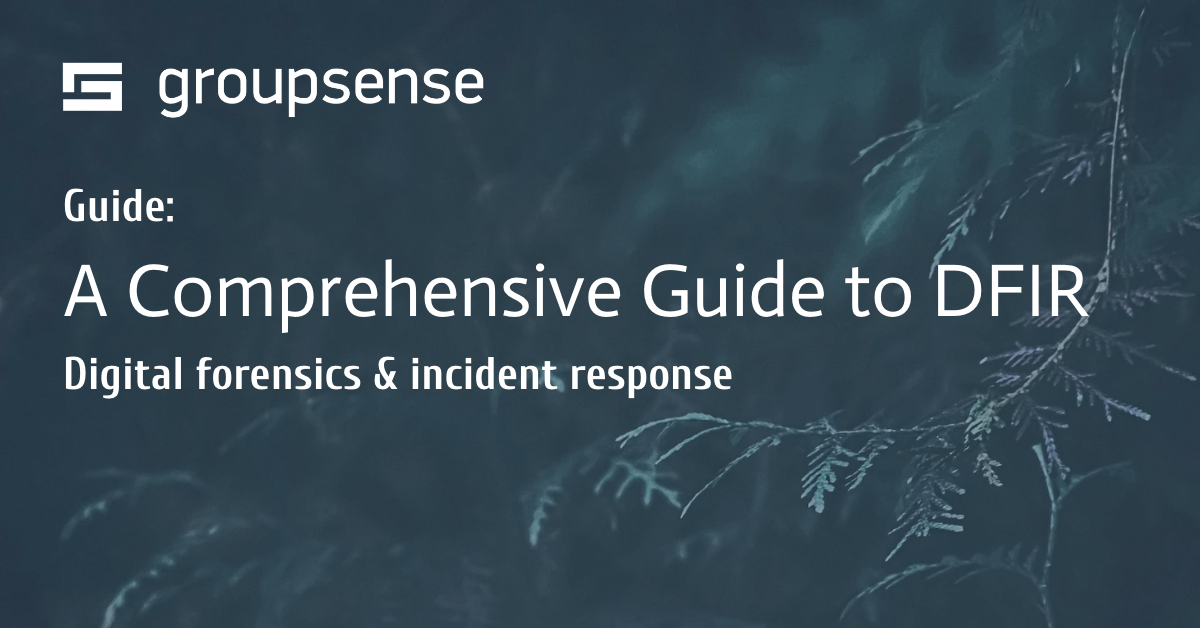How to Identify and Mitigate Potential Threats
The threat landscape for organizations today is continually evolving, putting their data and assets at risk. To ensure the robustness of your organization's security posture, it's integral to have an in-depth understanding of your external attack surface. This article provides a comprehensive guide to help organizations identify potential threats and mitigate risks proactively.
Defining External Attack Surface
Firstly, it's crucial to define what we mean by an external attack surface. It refers to the digital footprint of an organization that can be accessible from the internet. This means that any information that is publicly available online about an organization can be considered a part of its external attack surface. This includes all publicly available digital assets, such as websites, databases, web applications, servers, and cloud environments.
It is important to understand that the external attack surface is not limited to just the organization's own digital assets. It also includes any third-party services or networks that the organization relies on to conduct its business. For example, if an organization uses a third-party payment processor to handle its online transactions, that payment processor's network would be considered a part of the organization's external attack surface.
Components of an External Attack Surface
The external attack surface comprises various components that need to be diligently monitored and assessed for security risks. These components include:
- Internet-facing infrastructure such as servers, routers, firewalls, and load balancers: These components are the first line of defense against external attacks and are therefore a prime target for attackers.
- Web applications and APIs: These are the digital interfaces that allow users to interact with an organization's online services. They are often targeted by attackers looking for vulnerabilities to exploit.
- Cloud services such as AWS, Google Cloud, and Microsoft Azure: These services provide organizations with flexible and scalable computing resources but can also introduce new security risks if not properly configured.
- Third-party vendor networks that provide essential services to the organization: These networks can introduce new security risks if they are not properly secured and monitored.
Importance of Monitoring Your External Attack Surface
Failure to monitor your external attack surface can lead to critical vulnerabilities and data breaches that can have far-reaching consequences. By regularly monitoring your external attack surface, your organization can be proactive in identifying and mitigating potential security risks before they can be exploited by bad actors.
It is important to note that monitoring your external attack surface is an ongoing process. As your organization's digital footprint evolves and new technologies are adopted, new security risks may arise. Therefore, it is important to regularly reassess your external attack surface and adjust your security measures accordingly.
Identifying Potential Threats
Identifying potential threats is the first step in mitigating security risks in your external attack surface. Organizations should be aware of the various types of external threats that may target their digital assets.
One of the most important aspects of identifying potential threats is understanding the motives of potential attackers. Hackers may be motivated by a variety of factors, including financial gain, political motives, or simply the thrill of the challenge. By understanding the motives of potential attackers, organizations can better anticipate the types of attacks they may face and take appropriate measures to protect their digital assets.
Common Types of External Threats
Some of the most common types of external threats that organizations may face include:
- Phishing attacks designed to trick employees into disclosing sensitive information, such as usernames and passwords
- Phishing attacks are often conducted via email and are designed to look like legitimate messages from trusted sources. These attacks can be difficult to detect, as they often rely on social engineering tactics to trick users into clicking on malicious links or downloading malware.
- Malware and ransomware attacks that can infect your systems and lock your data unless a ransom is paid
- Malware and ransomware attacks are among the most damaging types of cyber attacks. These attacks can result in the theft or destruction of sensitive data, as well as significant financial losses for affected organizations.
- Denial of Service (DoS) attacks that can render your servers or websites unavailable
- DoS attacks are designed to overwhelm servers or websites with traffic, rendering them unavailable to legitimate users. These attacks can be difficult to defend against, as they often involve large networks of compromised devices.
- SQL injection attacks that can compromise your databases and extract sensitive data
- SQL injection attacks are a common tactic used by hackers to gain access to sensitive data stored in databases. These attacks exploit vulnerabilities in web applications to inject malicious code into SQL statements, allowing attackers to extract data or even take control of the affected system.
Tools and Techniques for Threat Detection
To detect potential threats effectively, organizations can use various tools and techniques, such as:
Penetration Testing to identify vulnerabilities in your digital assets
Penetration testing involves simulating real-world attacks on an organization's digital assets to identify vulnerabilities that could be exploited by attackers. This technique can help organizations identify potential weaknesses in their security defenses and take appropriate measures to address them.Web Application Scanning to detect vulnerabilities in your web applications
Web application scanning involves using automated tools to scan web applications for vulnerabilities, such as SQL injection or cross-site scripting (XSS) attacks. This technique can help organizations identify and remediate vulnerabilities before they can be exploited by attackers.Network Scanning to identify vulnerable devices, endpoints, and ports
Network scanning involves scanning an organization's network to identify vulnerable devices, endpoints, and ports that could be exploited by attackers. This technique can help organizations identify potential entry points for attackers and take appropriate measures to secure them.
Dark Web Monitoring to detect stolen credentials, data leaks, and other potentially harmful information
Dark web monitoring involves monitoring underground forums and marketplaces for stolen credentials, data leaks, and other potentially harmful information. This technique can help organizations identify potential threats before they can be used against them.Assessing Threat Severity and Prioritization
Once you've identified potential threats, it's integral to assess their severity and prioritize them based on their potential impact on your digital assets. This allows your organization to focus on high-priority threats first and mitigate any potential damage that could result from a security breach.
When assessing threat severity, it's important to consider factors such as the potential financial impact of a breach, the sensitivity of the data that could be compromised, and the potential impact on your organization's reputation. By prioritizing threats based on their severity, organizations can allocate resources more effectively and minimize the risk of a successful attack.
Mitigating Risks and Vulnerabilities
After identifying potential threats and assessing their severity, the next step is to develop a strategy to mitigate identified security risks effectively.
There are several ways to mitigate security risks effectively. Organizations should implement various security best practices, regularly conduct vulnerability assessments, and keep their software up to date. These measures will help to ensure that your organization is well-protected against potential security threats.
Implementing Security Best Practices
Implementing security best practices is a critical step in mitigating security risks. Organizations should consider implementing the following security best practices:
- Implementing multi-factor authentication (MFA) to enhance access control. MFA adds an extra layer of security to the authentication process, making it more challenging for unauthorized users to gain access to your systems.
- Enforcing password policies to ensure secure passwords and reduce the risk of credential theft. Password policies should require users to create strong passwords that are difficult to guess or crack.
- Limiting access to sensitive data and systems to authorized personnel only. Access controls should be put in place to ensure that only authorized personnel can access sensitive data and systems.
- Encrypting all sensitive data both in motion and at rest. Encryption is a critical security measure that helps to protect sensitive data from unauthorized access.
Regularly Conducting Vulnerability Assessments
Regularly conducting vulnerability assessments on your external attack surface helps to identify gaps and vulnerabilities that malicious actors could exploit. Consistent vulnerability assessments ensure your organization is proactive in mitigating any security risks and maintaining a robust security posture.
During a vulnerability assessment, security professionals will test your systems and applications for vulnerabilities. They will then provide you with a report detailing any vulnerabilities found and recommend steps to mitigate them. Regular vulnerability assessments are an essential part of any security strategy.
Patch Management and Software Updates
Organizations that lag in installing the latest software updates and security patches expose their digital assets to various security risks. Malicious actors regularly target organizations that fail to update their software, exploiting known vulnerabilities to launch attacks. Therefore, it's essential to maintain a robust patch management strategy that ensures all software is up to date regularly.
Software updates and security patches are released regularly to address known vulnerabilities and improve the overall security of your systems. By keeping your software up to date, you can ensure that your organization is well-protected against potential security threats.
Incident Response Planning
No organization can consider itself immune to security incidents. Hence, incident response planning is integral to ensure that your organization can detect, contain, and respond to security incidents effectively.
Developing an Incident Response Plan
Developing an incident response plan involves understanding the potential security incidents that could occur and planning a response protocol to mitigate them. It includes identification of internal personnel and external partners who will be involved in the incident response process, as well as a communication plan to ensure stakeholders and the public are informed in a timely and transparent manner.
Roles and Responsibilities in Incident Response
It's vital to have clearly defined roles and responsibilities during an incident response. This helps prevent confusion and delays during a security incident response. Assigning specific responsibilities to various stakeholders - such as the incident response team, IT personnel, law enforcement, and public relations personnel - enables a swift coordinated response.
Communication and Coordination During an Incident
Communication and coordination are integral during an incident response to ensure all stakeholders are aware of what's happening, the potential impact on the business, and the steps taken to respond to the incident. It's critical to maintain transparency and provide regular updates throughout the response to stakeholders to reduce panic and assure them that the organization has the situation under control.
Conclusion
Organizations must have a comprehensive understanding of their external attack surface, potential security threats, and mitigation strategies. By proactively monitoring their external attack surface, identifying potential threats, and mitigating risks effectively, organizations can maintain a robust security posture that guards against threats to their digital assets and reduces the risk of financial and reputational damage.






